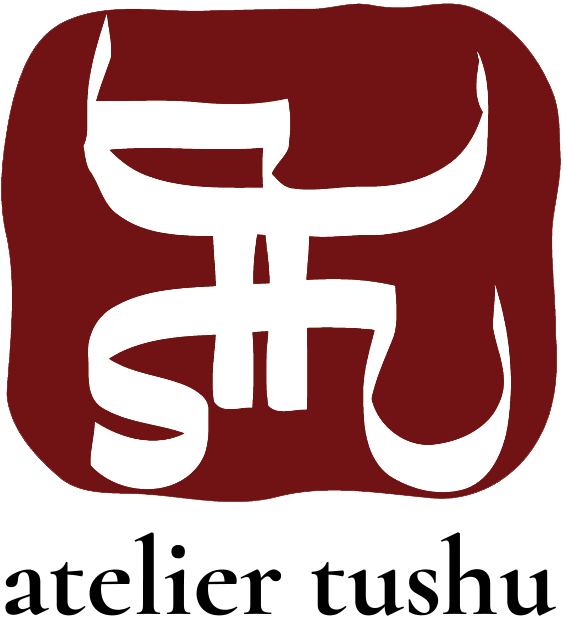Literature Review: Perception, Materiality, and the Semiotics of Ambiguity in Chronoliths
Chronoliths occupies a unique position at the intersection of contemporary art, speculative archaeology, and phenomenological inquiry. Its ambiguous forms and deliberate material anachronisms—contemporary stoneware objects incised with Paleolithic symbols using a genuine Paleolithic blade—invite not interpretation but encounter. To understand how such work operates across sensory, semiotic, and historical registers, it is useful to draw from a range of theoretical traditions. The following review brings together key thinkers whose work helps to frame Chronoliths as a sustained investigation into the embodied, temporal, and interpretive conditions of meaning.
Merleau-Ponty and the Primacy of Perception
At the core of Chronoliths lies a phenomenological impulse, closely aligned with the work of Maurice Merleau-Ponty. His concept of pre-reflective perception—the idea that meaning emerges not through intellectual analysis but through bodily engagement—offers a compelling frame for understanding the viewer’s relationship to the Chronoliths. In Phenomenology of Perception (1945), Merleau-Ponty argued that perception is not a passive reception of data but an active mode of being in the world. The Chronoliths, in their silence and strangeness, do not signify in any conventional sense; rather, they solicit a form of attentiveness that is felt before it is thought. They echo his late-career notion of the flesh of the world, where subject and object are enmeshed in a shared ontological field—material and perceptual, ancient and contemporary, indistinctly separated.
Didi-Huberman and the Epistemology of the Trace
Georges Didi-Huberman’s reflections on image, trace, and historical opacity are essential to understanding Chronoliths’ resistance to legibility. In Confronting Images (1990) and The Surviving Image (2002), he critiques the positivist impulse to extract fixed meaning from the past. Instead, he champions a poetics of the fragment, where ambiguity is not a deficiency but a necessary condition of any encounter with the past. The Chronoliths, situated deliberately within this ambiguous terrain, do not offer themselves as evidence of lost meaning but as invitations to linger in its absence. They operate, to borrow his language, as “survivals”—haunting presences rather than decipherable messages.
Ingold, Making, and Temporal Collapse
Anthropologist Tim Ingold provides a framework for understanding the role of making in Chronoliths as an epistemic act. In Making: Anthropology, Archaeology, Art and Architecture (2013), Ingold proposes that the act of crafting is not the application of form to matter but a dialogue with materials. The use of a genuine Neolithic blade in the creation of the Chronoliths literalizes this proposition: the gesture of making folds the contemporary body into a prehistoric lineage. This collapse of time, facilitated not through representation but through action, places Chronoliths in continuity with ancient gestures—acts of inscription whose meanings were never stable to begin with.
Rancière and the Politics of Ambiguity
In The Politics of Aesthetics (2000), Jacques Rancière reframes aesthetics as the “distribution of the sensible”—the organization of what is visible, sayable, and thinkable within a given regime. Ambiguity, in his account, becomes a kind of political gesture: it unsettles existing distributions and demands new modes of attention. Chronoliths, in refusing explanatory text or narrative certainty, redistributes interpretive labor to the viewer. It reconfigures the viewer from passive recipient to active participant—an archaeologist of uncertainty.
Severi and the Ritual Function of Ambiguity
Carlo Severi’s work on ritual and memory deepens this perspective. In The Chimera Principle (2007), Severi explores how ritual images—especially those in oral cultures—function not by transmitting meaning directly but by enablingprocesses of imagination and memory. These images are ambiguous by design, structured to provoke rather than explain. The Chronoliths, with their indecipherable symbols and unknowable provenance, work in precisely this way: not as texts to be read but as objects that catalyze speculation, projection, and the invention of narrative worlds.
An Ontology of Unknowing
Taken together, these thinkers suggest that Chronoliths does not merely represent deep time; it stages a perceptual event that draws viewers into it. It challenges the assumption that meaning must be extracted from the past and instead foregrounds our desire to interpret as the real subject. The silence of the objects is not a void but a field of potential—a space of encounter, where past and future meet not in resolution but in resonance. It is a project about the conditions of knowing, and the strange fertility of not knowing.
